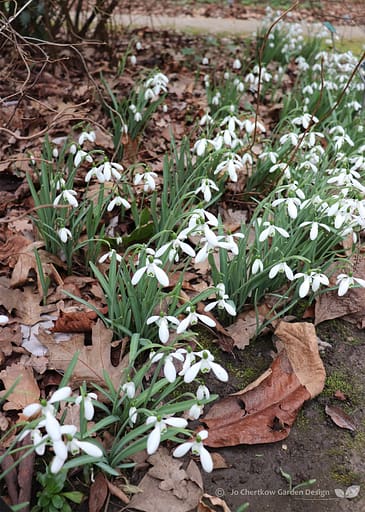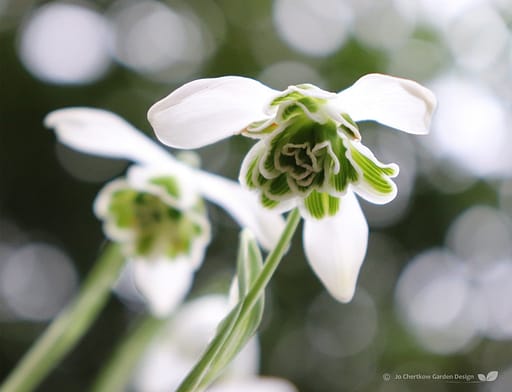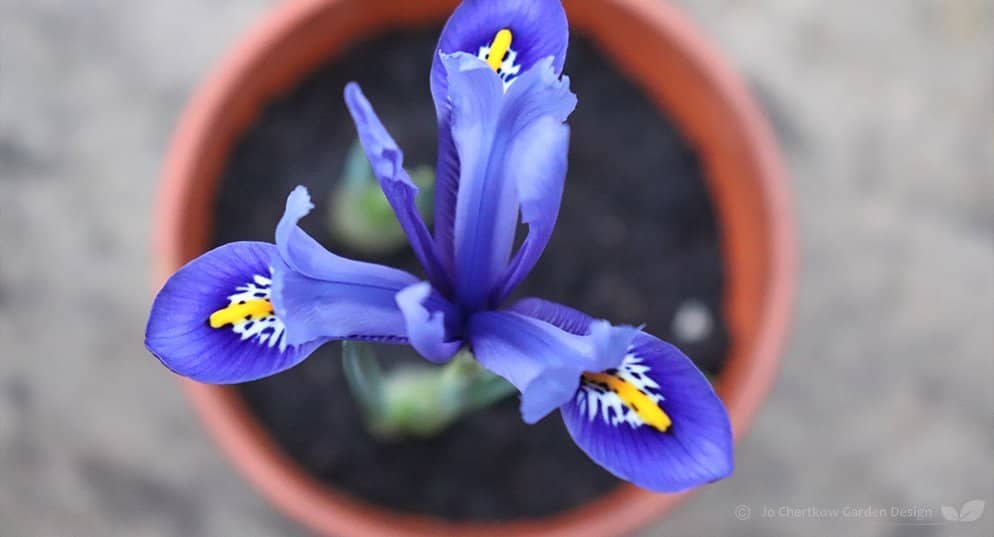If ever there was a year when we are going to need some cheer in the late winter and early spring this is it. Planting spring flowering bulbs this autumn offers the prospect of of a joyful spring garden next year. After a winter of Coronovirus restrictions I think we are going to need it. In this blog post I discuss a variety of different spring bulbs to plant now to brighten your garden in the new year.
With increasingly busy lives its easy not to make time for something with such a delayed reward. But, if you can find a small amount of time now it will produce fabulous results in a few months. Prepared bulbs are also very reliable, and good value. So they offer a low risk and economical way of brightening your garden early in the season.
The variety of spring bulbs available today is extensive. There are options for every type of garden or a window box or pot if space is limited. There are also bulbs to brighten every month, with snow drops (Galanthus) and Iris reticulata brightening the dullest January days, through to tulips and alliums to welcome the balmy days of April and May. Shop online from specialists, in garden centres or even in your local supermarket!
How to plant spring bulbs
Spring bulbs are relatively easy to plant, and once in the ground or a container will need no attention for the next few months. Once in growth in spring container grown bulbs may need watering in dry weather.
The bulbs need to be positioned with the pointy end up. If it isn’t obvious look for where there are signs of old roots and position that downwards. It is better to plant bulbs deeper than you think, and the larger the bulb the deeper it needs to be. If you aim for two to three times the size of the bulb deep they will be happy. You can dig the hole with a simple trowel, or special bulb planters will dig a core of soil out to speed up the process if you are planting lots of bulbs.
To plant bulbs in containers ensure that there is compost in the base and layer bulbs with the first to flower deepest.
Snowdrop (Galanthus)

There are in fact varieties of snowdrop that flower in autumn, but the majority will flower from January in milder areas and into February. Galanthus nivalis is the common snowdrop most often seen but rarer varieties are becoming more available. Snowdrop theatres at public gardens have raised interest in the vast range of varieties enthusiasts cultivate. With their hanging flower heads the differences in varieties are often not spotted until you inspect them closely. It is well worth pausing to peer under the outer petals to reveal the flamboyant inner petals of varieties such as Galanthus ‘Hippolytus’.
Snowdrops are best planted ‘in the green’ in spring after flowering but with their leaves still attached. However, bulbs are freely available to plant now and represent a cheaper option if you want to plant a large area. They prefer a position similar to their natural woodland habitat, so under deciduous trees with well drained humous rich soil.

Iris reticulata

These small irises provide one of the earliest splashes of colour in the new year and the colour is wonderfully intense. From pale yellow to vivid ultramarine and dark indigo, with elaborate contrasting patterns and veining these are stunning flowers. I always have some in pots to place near the front door for instant cheer. Pots can also be brought inside to enjoy. Or plant at the front of borders or naturalised in grass.
Iris reticulata ‘Harmony’ is one of the most commonly available varieties. ‘Blue Note’ offers wonderfully dark velvety blue with deep purple tones. ‘Katharine Hodgkin’ by contrast has pale petals patterned with blue and yellow.
Crocus

Crocus provide a wonderfully uplifting sight on sunny days in early spring as they unfurl their petals. They are well suited to being planted in lawns as their thin leaves fade before grass is ready for mowing again. Choose a sunny open spot to ensure they put on the best display. Either plant in individual holes or lift sections of turf to scatter the bulbs under. You should add some grit if the ground is not that free draining as they dislike being too wet.
Colours range from the richest golden yellow through white to purple. Delicately patterned varieties offer a further dimension by combining colours.
If you don’t have a lawn crocuses will be quite happy in a pot or trough. Just watch out if you share your garden with squirrels because crocus bulbs are a particularly favoured snack!
Daffodils (Narcissus)

The term daffodil is often used to describe larger flower varieties with Narcissus used for the smaller flowered such as ‘Tête-à-tête’. However, all daffodils are in fact members of the Narcissus genus. Ranging from brilliant golden yellow trumpets, through double flowerheads to delicate white multiheaded varieties there is a Narcissus for every garden or pot. Narcissus also span a long flowering period, from the earliest emerging in February to others gracing the garden in late April.
For early cheer, windy spots and pots you can’t beat ‘Tête-à-tête’ whose short stems are early to reveal their bright flower heads.

For delicate beauty on a longer stem ‘Thalia’ provides multiple delicate creamy white flower heads from March through into April and looks fabulous in shady areas.
Tulips

Tulips offer an opportunity to bring an extravaganza of colour to the garden in April and May. The range of tulips available today is vast, with flower shapes ranging from the smooth cup shape to elaborate ruffles. Colours are also available to suit every planting scheme from cool creams, through pastel pinks and yellows to vibrant scarlets and purples.
Species tulips show us what the original wild tulips were like. Examples include the native Tulip sylvestrus or the more exotic Tulip humilis ‘Persian Pearl’. These species tulips are the best for naturalising if you want to plant them and leave them to return year after year.

Tulips are very happy in containers and can be combined in stunning colour combinations to produce a fabulous display. Plant in containers in layers with the earliest flowering planted the deepest for a stunning display.
It is best not to plant tulips until October or November because cooler ground temperatures reduce the risk of viral diseases.
Allium

Alliums span gardens progression from spring into summer. From the stunning Allium ‘Purple Sensation’ which lights up many gardens in May through to the fuschia pokers of Allium sphaerocephalon in July. Alliums almost architectural beauty can really add a wow factor to your borders. Their elegant seedheads will continue to add to your garden for many months after the colour has faded.
Caution: many ornamental bulbs, their leaves and flowers are poisonous so plant with caution if they will be accessible to pets or small children.
Spring bulbs are available from all garden centres, but specialist online suppliers often have a wider range:

For garden design services and advice on how to use spring bulbs to revitalise your garden please click here to get in touch

